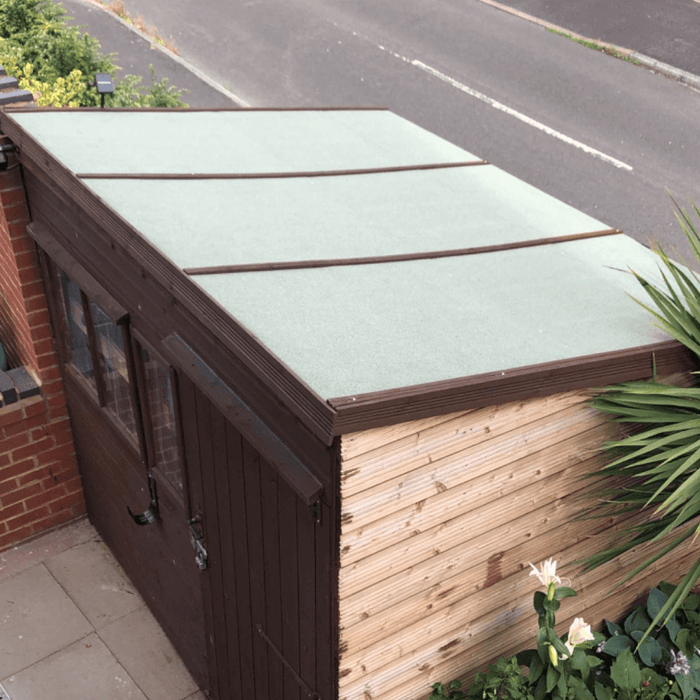Creating a beautiful patio can transform your outdoor space, making it a perfect spot for relaxation, entertainment, or simply enjoying nature. In this guide, we will walk you through the essentials of laying a patio, protecting it, understanding common issues, and maintaining its pristine condition.
Things You Will Need to Lay a Patio
Before you start laying your patio, it's crucial to gather all the necessary materials and tools. Here’s a comprehensive list to get you started:
-
Paving Slabs: Choose from a variety of materials such as concrete, natural stone, or porcelain.
-
Sub-base Material: Typically, a mix of crushed stone or gravel.
-
Sand: Sharp sand for bedding
-
Cement: For creating mortar mix.
-
Jointing Compound: For filling the joints
-
Edge Restraints: To keep the patio in place.
-
Paving Sealer: For protecting your freshly laid patio
-
Tools: Shovel, rake, wheelbarrow, spirit level, tape measure, rubber mallet, and a trowel.
-
Protective Gear: Gloves, safety glasses, and knee pads.
By having all these items on hand, you can ensure a smooth and efficient patio laying process.
How to Lay Your New Patio
Laying a patio involves several key steps. Here’s a step-by-step guide:
-
Planning and Preparation:
- Measure and mark out the area.
- Remove any existing grass or soil to a depth of around 150mm.
- Ensure the area is level and compact the soil.
-
Laying the Sub-base:
- Spread a layer of sub-base material (about 100mm thick).
- Compact it firmly using a plate compactor.
-
Adding Sand:
- Spread a 50mm layer of sharp sand over the sub-base.
- Level the sand using a straight edge or a spirit level.
-
Laying the Paving Slabs:
- Start from one corner and lay the slabs on the sand bed.
- Tap each slab gently with a rubber mallet to set it in place.
- Maintain even spacing (around 10-15mm) between slabs.
-
Pointing the Joints:
- Read the instructions on your jointing compound.
- Fill the joints between slabs with the jointing compound.
- Smooth the joints with a pointing trowel.
-
Finishing Touches:
- Clean off any excess mortar.
- Seal the paving with you patio sealer.
- Allow the patio to set for at least 24-48 hours before use

How Can You Protect Your Freshly Laid Patio?
Once your patio is laid, protecting it from the elements and wear is essential. Here are some tips:
-
Sealant Application:
- Apply a suitable patio sealant to protect against stains and weather damage.
- Follow the manufacturer’s instructions for application and drying times.
-
Regular Cleaning:
- Sweep the patio regularly to remove debris.
- Use a gentle patio cleaner to maintain its appearance.
-
Avoid Heavy Loads:
- Prevent heavy furniture or vehicles from being placed on the patio to avoid cracking or shifting.
-
Proper Drainage:
- Ensure adequate drainage to prevent water pooling, which can damage the patio over time.

Why Does Your Patio Go Green?
A common issue many patio owners face is the growth of green algae or moss. This usually occurs due to:
-
Moisture Retention: Shaded areas that retain moisture are prime spots for algae growth.
-
Lack of Sunlight: Limited sunlight prevents the patio from drying out properly.
-
Organic Debris: Leaves and other organic matter can create a suitable environment for algae.
Regular cleaning and maintenance can help prevent these issues and keep your patio looking its best.

Are Paving Slabs Permeable?
Permeability in paving slabs refers to their ability to allow water to pass through. Here’s what you need to know:
-
Permeable Paving Slabs:
- Designed to let water drain through the gaps between the slabs.
- Helps reduce water pooling and improves drainage.
-
Non-Permeable Paving Slabs:
- Water runs off the surface, requiring adequate drainage solutions.
- Typically more durable and widely available.
Choosing between permeable and non-permeable slabs depends on your specific needs, local climate, and drainage requirements.
In conclusion, laying a patio involves careful planning, the right materials, and proper maintenance. By following these guidelines, you can create a beautiful and durable outdoor space that enhances your home’s aesthetic and functionality.
Here at Ashbrook Roofing Supplies, we have a team of experts to help you with any further questions you might have, whether that be landscaping or roofing and building, our team have the knowledge to help you get the right information.
We also stock a large range of products for landscaping and building so please browse our range here: www.ashbrookroofing.co.uk.













